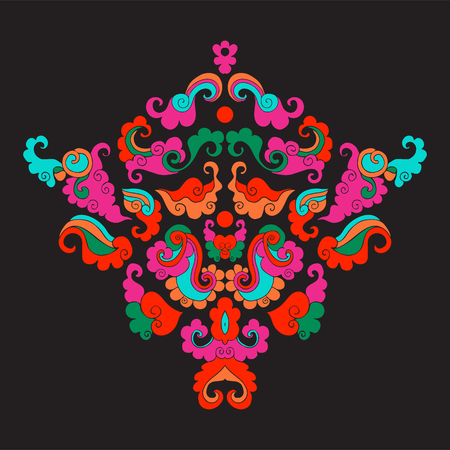Introduction to Indian Textiles and Sustainable Fashion
India’s textile heritage is as diverse and vibrant as its culture, with a history that dates back thousands of years. From the luxurious silks of Varanasi to the earthy cottons of Gujarat, traditional Indian textiles reflect centuries of craftsmanship and deep-rooted cultural identity. These fabrics are not just materials; they tell stories of communities, rituals, and indigenous artistry passed down through generations. In recent years, the global fashion industry has witnessed a significant shift towards sustainability, emphasising eco-friendly practices and ethical sourcing. This evolution has placed Indian textiles in the spotlight, as their age-old techniques often align with sustainable values—handloom weaving, natural dyeing, and organic fibres have long been part of India’s textile legacy. As both domestic and international consumers seek fashion choices that respect the planet and preserve cultural heritage, Indian textiles offer a compelling bridge between tradition and modernity in the journey towards sustainable fashion.
2. Traditional Indian Fabrics: Heritage and Techniques
India’s textile legacy is deeply rooted in its diverse culture, where each region showcases unique fabrics and weaving techniques that have evolved over centuries. These traditional textiles not only reflect India’s artistic heritage but also champion sustainable fashion through eco-friendly production methods passed down by skilled artisans. Let’s explore some of the most iconic Indian textiles and the age-old techniques that make them both culturally significant and environmentally responsible.
Iconic Indian Textiles
| Textile | Origin | Key Features | Sustainable Aspect |
|---|---|---|---|
| Khadi | Pan-India (Promoted by Mahatma Gandhi) | Hand-spun, handwoven cotton fabric; symbol of self-reliance and simplicity | Minimal energy usage, supports rural livelihoods, biodegradable |
| Ikat | Andhra Pradesh, Odisha, Gujarat | Tie-dye technique on yarns before weaving; distinctive blurred patterns | Low chemical usage, water-efficient dyeing process, preserves artisan skills |
| Banarasi Silk | Varanasi, Uttar Pradesh | Luxurious silk sarees with intricate zari (gold/silver thread) work and motifs inspired by Mughal art | Handloom weaving reduces carbon footprint, natural fibres, supports local craftspeople |
| Kanjeevaram Silk | Kanchipuram, Tamil Nadu | Richly woven silk sarees with contrasting borders and temple-inspired designs | Sustainable sericulture practices, family-run weaving traditions, long-lasting textiles reduce waste |
The Artisan’s Touch: Heritage Techniques for a Greener Tomorrow
The continued use of traditional handloom and natural dyeing techniques in India ensures lower environmental impact compared to industrial manufacturing. Hand-spinning and weaving reduce electricity consumption, while vegetable dyes avoid harmful chemicals. Many artisans follow zero-waste principles by utilizing leftover threads for smaller products like dupattas or stoles. These practices not only preserve India’s textile heritage but also align with contemporary calls for ethical and planet-friendly fashion.

3. Sustainability Practices in Indian Textile Industry
India’s textile heritage is deeply rooted in sustainable practices that have been passed down through generations. Across the diverse landscape of the country, indigenous communities and artisans embrace environment-friendly methods that minimise ecological impact while preserving cultural identity. One such practice is the use of natural dyes, derived from local plants, roots, flowers, and minerals. These dyes are not only biodegradable but also contribute to vibrant, unique colour palettes distinctive to regions like Rajasthan, Gujarat, and Tamil Nadu.
The tradition of handloom weaving stands at the heart of India’s sustainable textile sector. Unlike power looms, handlooms consume minimal electricity and support rural livelihoods by enabling artisans to craft intricate fabrics like Khadi, Chanderi, and Kanchipuram silk. This method champions slow fashion, with each piece reflecting patience, skill, and a commitment to quality over quantity.
Several clusters across India have adopted zero-waste approaches as part of their craft. For instance, in states like Odisha and West Bengal, leftover yarns and fabric scraps are ingeniously repurposed into accessories or home décor items. Additionally, block printing hubs such as Bagru employ water recycling systems and eco-friendly washing techniques to further reduce their environmental footprint.
These indigenous practices not only foster environmental stewardship but also empower local communities by valuing traditional knowledge. As global consumers increasingly seek ethical fashion choices, India’s time-honoured textile crafts offer a blueprint for a more conscious and sustainable future.
Economic and Social Impact on Local Communities
Traditional Indian textiles are more than just a celebration of heritage—they are a powerful vehicle for economic and social transformation in rural India. The handloom and craft sector, deeply rooted in regions like Gujarat, West Bengal, and Andhra Pradesh, directly supports millions of artisans, especially women, by offering sustainable livelihoods. Empowering these communities through textile crafts not only preserves cultural identity but also drives inclusive growth.
Empowering Rural Artisans
When rural artisans engage in traditional crafts such as block printing, Bandhani, or Chikankari, they gain direct access to income-generating opportunities. These crafts rely on skill rather than heavy machinery, making them ideal for home-based work. This decentralised model allows families—often led by women—to balance household responsibilities with earning potential, leading to improved socio-economic status.
The Role of Women in Textile Crafts
Women form the backbone of many artisan clusters across India. By participating in cooperatives and self-help groups (SHGs), they develop entrepreneurial skills and collective bargaining power. Their involvement ensures that earnings stay within the community and contributes to better education, health, and nutrition for their families.
| Community Benefit | Description |
|---|---|
| Financial Independence | Access to fair wages through direct market linkages and reduced exploitation by middlemen. |
| Social Empowerment | Increased confidence and leadership roles for women in local governance and decision-making. |
| Cultural Preservation | Younger generations learn traditional skills, ensuring continuity of craft forms. |
| Sustainable Development | Eco-friendly production methods promote environmental stewardship and community health. |
Promoting Fair Trade Practices
Fair trade initiatives have gained momentum within Indias textile sector. Organisations such as Dastkar and SEWA connect artisans to ethical brands globally, ensuring transparency in pricing and working conditions. By adopting fair trade principles—like equitable pay, safe workspaces, and respect for indigenous knowledge—these programs foster dignity and resilience among artisans.
The evolving role of traditional Indian textiles is thus intertwined with uplifting local economies and empowering marginalised voices. As conscious consumers increasingly seek authenticity and sustainability, supporting these crafts becomes an act of solidarity with the communities that keep Indias textile legacy alive.
5. Modern Innovations Bridging Tradition and Sustainability
India’s fashion ecosystem is witnessing a remarkable transformation, with new-age designers and startups blending traditional textile crafts with contemporary aesthetics and sustainable business models. By leveraging India’s rich artisanal heritage, these innovators are championing eco-friendly practices while creating fresh identities for Indian textiles on the global stage.
Indian Designers Leading the Change
Designers like Anita Dongre, Sabyasachi Mukherjee, and Rahul Mishra have placed Indian handloom and embroidery at the heart of their collections. They source directly from rural artisans, promote slow fashion, and use natural dyes and organic fibers. Their creations not only revive fading crafts like Benarasi brocade, Chikankari, and Kanjeevaram silk but also position them as luxury statements in international markets.
Startups Championing Circular Economy Models
Innovative startups such as Doodlage, Kosha, and Rimagined exemplify the circular economy in action. Doodlage upcycles industrial textile waste into contemporary clothing, while Rimagined transforms post-consumer fabric into home décor products. These ventures embrace zero-waste production, recycling, and upcycling techniques—minimizing landfill burden and promoting mindful consumption among urban Indians.
Integrating Technology with Heritage Crafts
The adoption of digital tools is further empowering artisan clusters in states like Gujarat, Odisha, and West Bengal. E-commerce platforms enable direct access to conscious consumers worldwide, ensuring fair wages and recognition for craftspeople. Blockchain-based traceability systems are also being explored to authenticate origin stories of fabrics like Khadi or Ikat, building consumer trust in sustainable sourcing.
Paving the Way for Responsible Fashion Futures
This synergy between tradition and innovation is at the core of India’s sustainable fashion movement. As more brands adopt eco-conscious processes—be it through biodegradable packaging, vegan dyes, or transparent supply chains—they inspire a new wave of responsible consumption rooted in Indian values of “Vasudhaiva Kutumbakam” (the world is one family). This collaborative journey not only protects our environment but also celebrates India’s living textile legacy for generations to come.
6. Challenges and Future Pathways
India’s traditional textile sector, with its centuries-old legacy, now faces significant challenges amidst the rising tide of market competition and the global dominance of fast fashion. The influx of mass-produced garments, often at lower prices, has put immense pressure on local artisans and handloom weavers. These craftspeople struggle to compete not just in terms of pricing but also in visibility on both domestic and international platforms.
One critical challenge is the lack of widespread awareness among Indian consumers regarding the environmental and social costs of fast fashion. Often, quick purchasing decisions are influenced by price rather than sustainability or heritage value. Additionally, limited access to modern technology and marketing channels further restricts artisans’ ability to reach broader markets.
To ensure a sustainable future for Indian textiles, it is essential to foster inclusive solutions tailored to India’s unique context.
Strengthening Local Ecosystems
Empowering rural clusters through skill development, digital literacy programmes, and direct-to-consumer online platforms can bridge gaps between artisans and buyers. Government policies must actively support fair trade practices and provide financial incentives for sustainable production methods.
Promoting Consumer Awareness
Campaigns highlighting the cultural significance and eco-friendly aspects of traditional Indian textiles can encourage mindful consumption. Educational initiatives in schools and communities can cultivate appreciation for ‘Make in India’ products over imported fast fashion items.
Collaborative Innovation
Partnerships between designers, NGOs, and artisan groups can result in new-age products that blend tradition with contemporary style, appealing to younger demographics without compromising authenticity.
Embracing Circular Economy Principles
Introducing repair, reuse, and recycling initiatives within textile communities will help reduce waste while maximising the lifecycle of handcrafted products. These efforts should be supported by both public policy and private investment.
The path ahead demands a harmonious blend of tradition and innovation, rooted in India’s cultural richness yet adaptive to modern needs. By addressing these challenges with India-specific strategies, the country’s textile sector can lead as a global example of sustainable fashion—one that honours heritage while securing livelihoods for generations to come.


